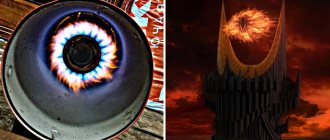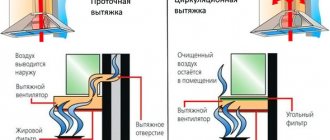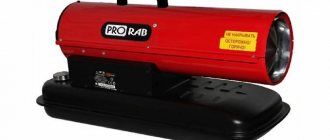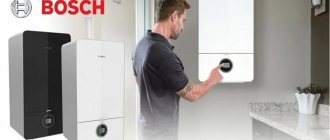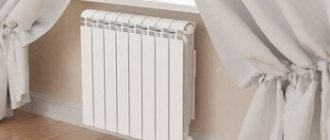Traditional water heating in our country is complex and expensive at the installation stage. Therefore, many are looking for other options for heating rooms, cottages, cottages and apartments. The first thing that comes to mind is electric heating convectors. Installation is super simple: set it up or hang it up, plug it into a power outlet. All. You can warm up. The only limitation is whether the wiring can withstand such a load. The second is decent electricity bills, but they can be reduced by installing a two-tariff meter.
Electric heating convectors can be the main or additional heat source
What is convection and convector
Convection is the process of heat transfer due to the movement of heated air. A convector is a device that heats air and promotes its movement. There are convectors in which heating occurs due to the circulation of coolant, then they are part of water heating. But we will talk about electric convectors, which convert electricity into heat, and air flows carry this heat throughout the room.
According to the installation method, convector electric heaters are wall-mounted, floor-mounted, in-floor (built in below floor level), baseboard and universal (installed on legs that come included or hung on the wall).
Convection heating principle
It is impossible to say which form of electric heating convectors is better. All forms are developed taking into account thermodynamics (at least, normal companies do this this way), so you base your choice only on your own preferences and on which design fits best into the design of the room. No one forbids installing electric convectors of different types in one apartment, house, or even in a room. The main thing is that the wiring can withstand.
Control unit or thermostat
A thermostat or an electronic control module can be used as a thermostat in convective heaters. In any case, this block is designed to control the heating temperature and operating time of the device, allowing you to control the temperature regime.
The most common regulator is a thermostat. Mechanical models are very simple - as soon as a certain heater temperature is reached, the electrical contact opens. It will not close until the device cools down again. The advantage of the thermostat is the low cost of the unit. But with its help it is difficult to control the heating of the room - the device operates depending on the temperature of the heating element, and not the surrounding air.
The electronic control module is equipped with several sensors that read the temperature of both the heater itself and the surrounding air. The microprocessor processes this data and controls the heating and cooling modes based on the settings given to it. Thanks to this, the room warms up to the set temperature. This is a more advanced type of thermostat.
Installation of electric heating convectors
The design of the electric convector is simple:
- a housing in which there are openings for air intake and exhaust;
- a heating element;
- sensors and control and monitoring devices.
The case is heat-resistant plastic. The shape can be flat or convex, rectangular or square. The case has holes at the bottom - cold air is sucked into them. There are also holes in the top of the case. Heated air comes out of them. The air moves without stopping, and the room warms up.
Convector heater device
The heating element of an electric convector is what you need to pay attention to when choosing. The service life of the equipment and air conditioning depend on the type of heater.
Types of heating elements for electric convectors
There are three types of heating elements in electric heating convectors:
- Needle-shaped. This is a dielectric tape into which loops and needles made of an alloy of chromium and nickel are mounted. The surface of the heater is covered with a layer of protective varnish. The loops stick out on both sides, heat up very quickly, and cool down just as quickly, and this is a plus of such heaters - it’s easy to maintain the set temperature. The second positive point is low cost. Electric convectors with needle-type heaters cost a third less. Disadvantages - cannot be used in high humidity; the fragility of the needles leads to the fact that such a heating element quickly fails.
Needle heater for electric convector - heating element. Tubular electric heater. This is a hollow metal tube with a spiral sealed inside. The distance between the spiral and the body is filled with heat-conducting fill. Heating elements for convectors are additionally soldered with fin plates to increase heat transfer. The disadvantages of this heater are relatively low efficiency, high inertia - due to losses during heat transfer from the coil to the body - it takes time to reach operating mode. Another drawback: the heating element may crackle during operation. The reason is the different temperature expansion of the materials used. Advantages - the spiral is reliably protected, the convector heater can be used in damp rooms. Another positive point is the long service life.
Heating element with fins for fast heating of water - Monolithic heaters are the quietest, with minimal heat loss. The same nickel-chromium alloy thread is sealed in a cast housing with fins. Heat loss during transfer from the filament to the body is minimal, the thermal expansion of all parts is the same.
Monolithic heater
Electric heating convectors with monolithic heaters are considered the best, but they are also the most expensive. Using heating elements is a little cheaper.
Types of Thermostats and Controls
Electric heating convectors can be controlled using a mechanical thermostat or electronics. The cheapest convector electric heaters have a thermostat, which, when the set temperature is reached, breaks the power circuit of the heating element. When it cools down, the contact appears again and the heater starts working. Devices of this type cannot maintain a constant temperature in the room - the thermostat is activated by the heating of the contact plate, and not by the air temperature. But they are simple and quite reliable.
Mechanical thermostat on electric heating convectors Nobo
Electronic control uses several sensors that monitor the state of the air in the room and the degree of heating of the device itself. The data is processed by a microprocessor, which adjusts the operation of the heater. The desired mode is set from the control panel located on the case, and there are also models with a control panel. You can find programmable models that allow you to set the heating mode for a whole week - while no one is home, set it to maintain around +10°C or lower and save on bills; when people arrive, warm up the room to a comfortable temperature. There are generally “smart” models that can be integrated into the “smart home” system and controlled from a computer.
Formula for calculating the thermal load taking into account the temperature difference
To more accurately determine the required thermal power of a heater or convector, we recommend using the following formula.
V (room volume) x T (temperature difference) x φ (heat loss coefficient) = kcal/h
Where:
- V is the volume of the room mentioned above: width * length * height.
- T (temperature difference) – depending on the climate zone, the temperature outside can be -5 C or -30 C. Therefore, a parameter was introduced into the formula to express the difference between the average winter temperature outside and the desired temperature indoors. Example: the average winter value outside is -15C, and in the room 25C is required - it turns out T = 40C.
- φ – coefficient of heat loss of premises depending on the design and insulation. 3-4 – lack of thermal insulation. Simple wooden or metal buildings without insulation.
- 2-2.9 – low thermal insulation. Single brick masonry, simplified building design, single windows.
- 1-1.9 – average thermal insulation. Buildings with two bricks, standard buildings, ordinary roofing, a small number of windows.
- 0.6-0.9 - high thermal insulation. Few windows, double glazing, brick walls, double insulation, insulated roof and thick subfloor.
To obtain the power value of a convector or heater in kilowatts, you need to divide the resulting number by 860.
Choosing an installation location
Or rather, the question is not this: which convector is suitable for fulfilling your wishes. If you want to bring the appearance of the room closer to the standard one, you can hang rectangular wall convectors under the windows. Models that can be installed under the ceiling attract a little more attention, but they are inaccessible to children and pets - they will not be able to get burned or “adjust” in their own way. The installation method is the same here - on brackets fixed to the wall. Only the shape of the brackets differs.
You can choose any location for installing the electric convector. It is only advisable that it is not covered by furniture
If you want your heating appliances not to be visible, you will have to choose between baseboard and in-floor models. There is a big difference in installation: skirting boards are simply installed and connected to the network, but for in-floor ones you will have to make special recesses in the floor - their top panel should be on the same level as the finished floor. In general, you cannot install them without major repairs.
These are floor-mounted convectors. They are also electric
Methods for determining the electricity consumption of household appliances and tools
The average electricity consumption in citizens' apartments per month is the sum of the total electricity consumption of all electrical appliances used by its residents. Knowing the electricity consumption for each of them will give an understanding of how rationally they are used. Changing the operating mode can provide significant energy savings.
The total amount of electricity consumed per month in an apartment or house is recorded by the meter. There are several ways to obtain data for individual devices.
A practical way to calculate electricity consumption based on the power of an electrical appliance
The average daily electricity consumption of any home appliance is calculated using the formula; just remember the basic characteristics of electrical appliances. These are three parameters - current, power and voltage. Current is expressed in amperes (A), power in watts (W) or kilowatts (kW), and voltage in volts (V). From the school physics course, we remember how electricity is measured - it is a kilowatt-hour, it means the amount of electricity consumed per hour. All home appliances are equipped with labels on the cable or on the device itself, which indicate the input voltage and current consumption (for example, 220 V 1 A). The same data must be present in the product passport. Based on current and voltage, the power consumption of the device is calculated - P=U×I, where
- P – power (W)
- U – voltage (V)
- I – current (A).
We substitute the numerical values and get 220 V × 1 A = 220 W.
Next, knowing the power of the device, we calculate its energy consumption per unit of time. For example, a regular liter electric kettle has a power of 1600 W. On average, he works 30 minutes a day, that is, ½ hour. We multiply the power by the operating time and get:
1600 W × 1/2 hour = 800 W/h, or 0.8 kW/h.
To calculate costs in monetary terms, we multiply the resulting figure by the tariff, for example, 4 rubles per kWh:
0.8 kW/h×4 rub.=3.2 rub. Calculation of the average monthly fee - 3.2 rubles * 30 days = 90.6 rubles.
In this way, calculations are made for each electrical appliance in the house.
Counting electricity consumption using a wattmeter
The calculations will give you an approximate result. It is much more reliable to use a household wattmeter, or energy meter - a device that measures the exact amount of energy consumed by any household device.
Digital wattmeter
Its functions:
- measuring power consumption at a given moment and over a certain period of time;
- current and voltage measurement;
- calculation of the cost of consumed electricity according to the tariffs you have set.
The wattmeter is plugged into a socket and the device you are going to test is connected to it. The display shows power consumption parameters.
Current clamps allow you to measure the current and determine the power consumed by a household appliance without disconnecting it from the network. Any device (regardless of manufacturer and modification) consists of a magnetic circuit with a movable disconnect bracket, a display, a voltage range switch and a button for recording readings.
Measurement procedure:
- Set the desired measuring range.
- Open the magnetic circuit by pressing the bracket, place it behind the wire of the device under test and close it. The magnetic core must be located perpendicular to the power wire.
- Take readings from the screen.
If a multi-core cable is placed in the magnetic core, the display will show zero. This happens because the magnetic fields of two conductors carrying the same current cancel each other out. To obtain the required values, measurements are carried out on only one wire. It is convenient to measure energy consumption through an extension cord-adapter, where the cable is divided into separate cores.
Determining energy consumption using an electric meter
A meter is another simple way to determine the power of a household appliance.
How to count light using a meter:
- Turn off everything in the apartment that runs on electricity.
- Record your readings.
- Plug in the desired device for 1 hour.
- Disable it and subtract the previous readings from the received numbers.
The resulting number will be an indicator of the electricity consumption of the individual device.
Power calculation
If a convector is needed only as an additional source of heat - for periods of extreme cold - it makes sense to take a couple of low-power devices - 1-1.5 kW each. They can be moved to those rooms where the temperature needs to be raised. If convector heating is the only source of heat, everything is much more serious.
This is approximately how you can calculate the power of convectors
If you do everything “wisely,” you need to calculate the heat loss of a house or apartment and select equipment based on the calculation results. In fact, this is very rarely done. Much more often they calculate the required heating power by area: 10 square meters for heating. m area requires 12 kW of heat. But these are the norms for average ceiling heights - 2.50-2.70 m and average insulation. If the ceilings are higher (the volume of air needs to be heated) or there is “no” insulation at all, the power is increased by 20-30%.
Energy Saving Tips
Our houses lose a lot of thermal energy. In order not to overpay for electricity, just get rid of heat loss.
By making calculations based on area or volume, and not taking heat losses into account at all, you risk getting an insufficiently efficient heating system - the rooms will be cool. The worst thing is if severe frosts hit in winter, which are not very typical for this area - if the calculations were made incorrectly, the convectors will not cope.
Next, we will tell you how to reduce heat loss. The banal lining of the household with an additional layer of brick and thermal insulation will help reduce them by 10-15%. Yes, the costs may be high, but you must remember that when using electric convectors, the costs of light can be gigantic - this is associated with large heat losses (in fact, you are heating the air “outside”).
You also need to work on the windows:
- Single-glazed windows require a 10% increase in power;
- Double windows do not lead to any heat loss (already a plus);
- Triple windows can save up to 10%.
In theory, three-pane windows can lead to significant savings, but there are other factors to consider.
During the insulation process, it is necessary to work in the attic. The whole point is that having an unheated attic entails losses. Therefore, you need to lay a layer of effective thermal insulation on it - it is not very expensive, but you can save up to 10% of thermal energy. By the way, the figure is 10%, based on the area of the house of 100 square meters. m, this is approximately 24 kW of heat per day - equivalent to monetary costs of 100 rubles / day or 3000 rubles / month (approximately).
Manufacturers, characteristics and prices
Electric convector heaters are produced by several companies that produce other household appliances - Electrolux, AEG, Hyundai, Stiebel Eltron, Zanussi. In addition, there are many companies that specialize in this type of technology or produce two or three more groups of products. Among them there are Russian manufacturers - Ballu, Termica, Ural-Mikmah-Term, Alvin. There is also a whole group of European brands:
- Airele, Noirot and Atlantic (France),
- Extra, Royal Thermo, Scoole, Timberk, WWQ (PRC),
- Frico (Sweden),
- NeoClima (Greece),
- Nobo (Norway)
and many more. Electric heating is the norm in Europe; water heating is rare here. Hence the number of companies producing such household appliances. But, as is usual in recent years, most companies have moved production to China, so the assembly is mainly Chinese, although quality control should be at the level.
Electric heating convectors can have a power from 0.5 kW to 2.5-3 kW. They operate mainly from a 220 V network; if necessary, three-phase ones can be found - from 380 V. With increasing power, the dimensions (mainly depth) and price increase. If we talk about prices on average, then the price for imported electric convectors is about $80-250, for Russian ones - $30-85.
| Name | Power | Additional functions | Installation type | Control type | Heating element type | Dimensions (D*W*H) | Price |
| AEG WKL | 0.5/1/1.5/2/2.5/3 kW | overheat protection | Wall | Thermostat | heating element | 78*370*450 | 105 — 195 $ |
| Airelec Paris digital 05DG | 0.5 kW | overheat protection | Wall | Electronic | Monolithic | 80*440*400 | 60-95 $ |
| Termica CE 1000 MR | 1 kW | Overheat protection + ionizer | Floor | Thermostat (mechanical) | heating element | 78*400*460 | 50 $ |
| Nobo C4F 15 XSC | 1.5 kW | Overheat and tip-over shutdown | Wall/floor | Electronic | heating element | 55*400*975 | 170 $ |
| Stiebel Eltron CS 20 L | 2 kW | Overheat protection + fan | Floor | Thermostat (mechanical) | spiral heating element | 100*437*600 | 200-220 $ |
| Stiebel Eltron CON 20 S | 2 kW | overheat protection | Floor | Thermostat (mechanical) | Stainless steel heating element | 123*460*740 | 450 $ |
| Noirot Melodie Evolution1500 | 1.5 kW | Overheat and tip-over shutdown | Wall-mounted (small height) | Electronic | Monolithic | 80*220*1300 | 300-350 $ |
| Ballu BEC/EVE – 1500 | 1.5 kW | Overheat and tip-over shutdown | Wall/floor | Electronic | Heating element Double G Force | 111*640*413 | 70 $ |
| Timberk TEC.PF1 M 1000 IN | 1 kW | Overheat and tip-over shutdown + ionizer | Wall/floor | Thermostat (mechanical) | Needle + quiet + economical | 100*410*460 | 65 $ |
| Dantex SD4-10 | 1 kW | Overheat and tip-over shutdown | Wall/floor | Electronic | Needle + quiet + economical | 78*640*400 | 45 $ |
Heating element and degree of moisture protection
The choice of convector also depends on the heating element. The service life of the heating device depends on this element. The service life of high-quality heating elements is at least 15 years. The housings of such elements are made of high-quality steel, capable of withstanding the temperatures developed by the filament located inside it.
The last selection criterion is the degree of moisture protection. A convector heater must have an IP of at least 21. Such a device will be protected from water droplets entering it. If the installation will be carried out in a bathroom or toilet (rooms with high humidity), we recommend choosing devices with splash protection (IP 24 and higher). Such devices can be installed at a distance of 60 cm (minimum) from a bathtub, swimming pool or other source of water.
Useful additional features
When choosing electric heating convectors, pay attention not only to technical parameters. There are also additional functions that increase comfort and safety:
- Overheat protection. An additional sensor is installed on the case, which turns off the power when a threshold value is reached. Usually it is +60°C.
- Drop shutdown. This function is relevant for models with floor-mounted installation. If the position changes (falls or bends too much), the power turns off. This function prevents possible fires.
- Restart. When turned on again, the electric convector automatically sets the settings that were when it was turned off.
Skirting-type convector - very low and long
Overheat protection and drop shutdown are very useful features that increase the safety of the equipment. Something else you can pay attention to is how quiet or loud the unit is. It's not just the heating element (it usually clicks). When activated, the mechanical thermostat also clicks. When choosing convection heaters for your bedroom, quiet operation is very important.
Equipment selection
The choice of heater depends on the area of a particular room (first criterion). The standard ratio is 80-100 W per square meter. This means that to heat a room of 10 m2 you will need a device whose power is 800-1000 W.
If the ceilings of the room are higher than three meters
, then it is recommended to increase the power of the device by 1.5 times. If electric convectors perform the functions of auxiliary heating devices, their power can be reduced.
Thermostat
The next selection criterion will be the thermostat. It is available electronic and mechanical. If you need a cheap thermostat, choose the second option. The mechanical thermostat is adjusted manually on the panel (push-button, disk). But such thermostats are not able to quickly respond to a drop in temperature.
Therefore, we recommend choosing a convector equipped with an electronic thermostat, although it will cost 25-30% more than its mechanical counterparts.
But the best option
– programmable type of thermostats. Its configuration is more flexible. If there is no one in the room (everyone has gone to work or classes), you can set the temperature to 12 degrees, but some time (an hour or two) before the apartment residents return home, instruct the device to increase the temperature to a level comfortable for the human body. This saves energy and eliminates the need to wait for the room to be heated to the desired temperature.
Convection as a method of heat transfer. How does a convection heater work ↑
Convection is one of the three main types of heat transfer. This is the name given to the transfer of heat through the movement of heated air.
The operation of a convector heater is based on the movement (convection) of air masses when heated. The air, warming up, expands, becomes lighter and lighter and tends to rise upward, while its cold masses, on the contrary, tend downward. The heating element in convector appliances is located inside the housing with holes in the lower and upper parts. Cold air, accordingly, being at the bottom, enters the device through the lower holes of the device; Gradually heating and expanding, the air escapes through the holes at the top. In the room heated by such a device, there is a silent circulation of air flows, and the temperature in the room gradually increases. Modern manufacturers of heating devices are striving to develop technologies that make it possible to create new energy-saving models for heating premises. The priority direction here is the development of economical heaters for the home. As a result of the constant search for optimal technological solutions, more and more efficient heaters are appearing on the market.
